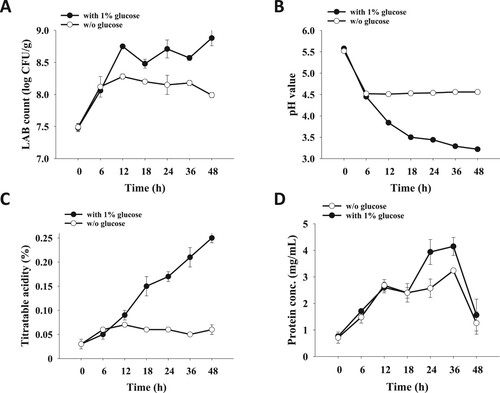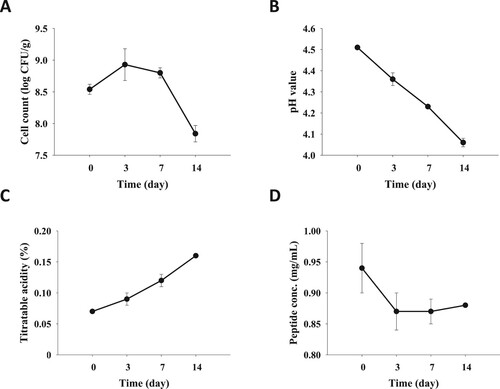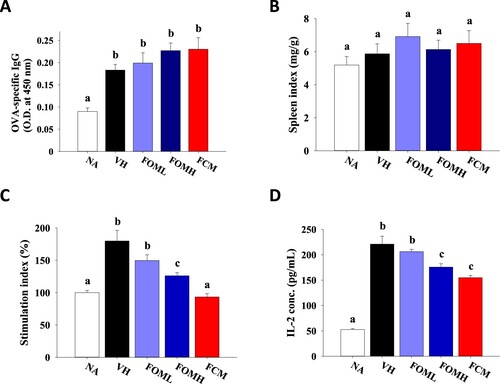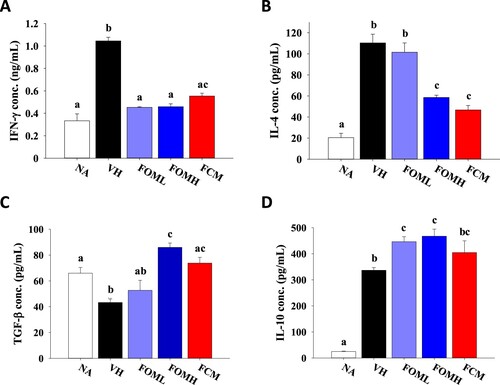Figures & data
Figure 1. Influence of 1% glucose addition on oat milk fermentation. Homogenized oat milk was inoculated with S. thermophilus, L. bulgaricus and L. rhamnosus followed by incubation at 37°C for 48 h. Analysis of (A) LAB count, (B) pH value, (C) titratable acidity and (D) protein concentration of fermented oat milk was performed at the anticipated time points. Results are expressed as means ± standard deviation (n = 3).

Figure 2. Storage test of fermented oat milk at 4°C. While the pH value reached to 4.4–4.6, the fermented oak milk was storage at 4°C, and (A) LAB count, (B) pH value, (C) titratable acidity and (D) protein concentration of fermented oat milk was determined at the anticipated time points. Results are expressed as means ± standard deviation (n = 3).

Figure 3. Influence of fermented oat milk supplement on antigen-specific IgG production and antigen-induced splenocytes proliferation. Mice in the naïve (NA) group did not receive any treatment throughout the experiment. The other mice (six mice per group) were sensitized with ovalbumin twice with a two-week interval and daily treated with PBS (vehicle control; VH), fermented oat milk (0.4 or 2 mg/kg body weight; FOML or FOMH), or commercial cow milk yogurt (2 mg/kg body weight; FCM) by gavage through the experiment. Fourteen days after the second sensitization, the mice were sacrificed to individually collect the (A) serum samples for OVA-specific IgG determination and the spleen samples for (B) spleen index calculation. The prepared splenocytes were cultured in the presence of OVA for 24 h to determine the level of (C) stimulation index and (D) IL-2 production. Results are expressed as SEM of triplicate experiments. Different letters indicate statistical difference (p < .05) between each group.

Figure 4. Influence of fermented oat milk supplement on antigen-induced T cell-associated cytokine secretion from splenocytes. The mice (six mice per group) were treated as described in the “Materials and methods.” Fourteen days after the second sensitization, the mice were sacrificed to harvest the spleen samples. The prepared splenocytes were cultured in the presence of OVA for 24–72 h. The supernatants were collected to determine the levels of (A) IFN-γ, (B) IL-4, (C) TGF-β and (D) IL-10 production. Results are expressed as SEM of triplicate experiments. Different letters indicate statistical difference (p < .05) between each group.

Data availability statement
The datasets used and/or analysed during the current study are available from the corresponding author on request.
